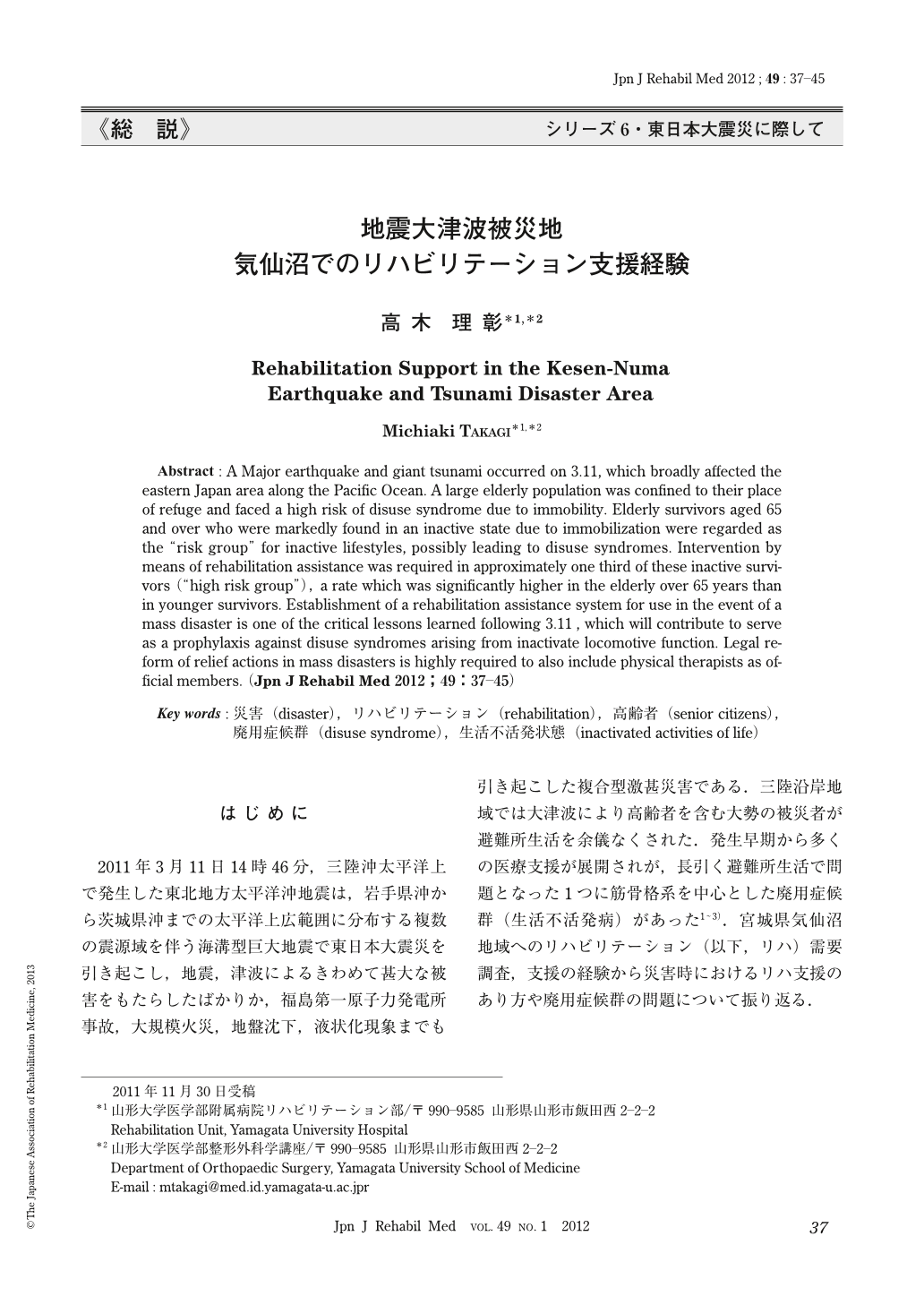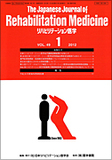Japanese
English
- 販売していません
- Abstract 文献概要
- 1ページ目 Look Inside
- 参考文献 Reference
はじめに
2011年3月11日14時46分,三陸沖太平洋上で発生した東北地方太平洋沖地震は,岩手県沖から茨城県沖までの太平洋上広範囲に分布する複数の震源域を伴う海溝型巨大地震で東日本大震災を引き起こし,地震,津波によるきわめて甚大な被害をもたらしたばかりか,福島第一原子力発電所事故,大規模火災,地盤沈下,液状化現象までも引き起こした複合型激甚災害である.三陸沿岸地域では大津波により高齢者を含む大勢の被災者が避難所生活を余儀なくされた.発生早期から多くの医療支援が展開されが,長引く避難所生活で問題となった1つに筋骨格系を中心とした廃用症候群(生活不活発病)があった1~3).宮城県気仙沼地域へのリハビリテーション(以下,リハ)需要調査,支援の経験から災害時におけるリハ支援のあり方や廃用症候群の問題について振り返る.
Abstract : A Major earthquake and giant tsunami occurred on 3.11, which broadly affected the eastern Japan area along the Pacific Ocean. A large elderly population was confined to their place of refuge and faced a high risk of disuse syndrome due to immobility. Elderly survivors aged 65 and over who were markedly found in an inactive state due to immobilization were regarded as the “risk group” for inactive lifestyles, possibly leading to disuse syndromes. Intervention by means of rehabilitation assistance was required in approximately one third of these inactive survivors (“high risk group”), a rate which was significantly higher in the elderly over 65 years than in younger survivors. Establishment of a rehabilitation assistance system for use in the event of a mass disaster is one of the critical lessons learned following 3.11, which will contribute to serve as a prophylaxis against disuse syndromes arising from inactivate locomotive function. Legal reform of relief actions in mass disasters is highly required to also include physical therapists as official members.

Copyright © 2012, The Japanese Association of Rehabilitation Medicine. All rights reserved.


